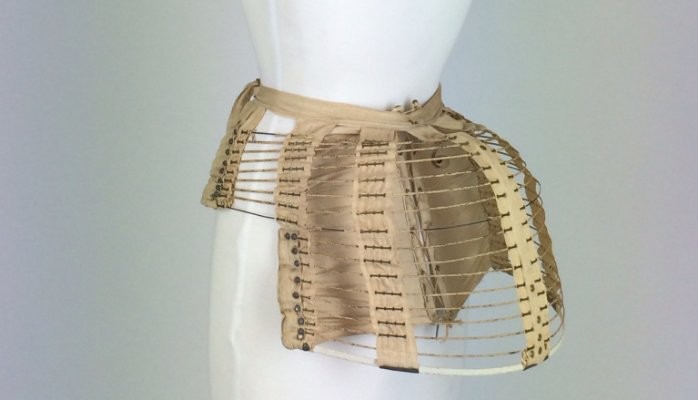
Bustle or Tournure
During a recent photo shoot I on which I collaborated with Cotton Australia as we build the world's first Cotton in Fashion History Digital Library, I found at the back of the storage unit a box of extraordinary late 19th century bustles.
Bustles like this one were worn by fashionable ladies in the late 1880s. The soft layered look, popular in the pervious decade and immortalised so beautifully in paintings such as August Renoir's "Le Moulin de la Galette" in 1876, was replaced by a severe, tailored silhouette with an exaggerated (and often extraordinary) fullness at the back created by layers of fabric. Fixed around the waist of the wearer, a bustle, made from a framework of watch spring wire held in place by grommets attached to heavy-weight cotton cloth, supported the folds of fabric to create a stiff protrusion. Georges Seurat's "La Grande Jatte", painted in 1884, captured this very rigid silhouette perfectly.
What I found fascinating about this and the other bustles in the collection is the fine woven cotton thread that covers every inch of the watch spring wire. As much as for decorative purposes, the cotton covering protected the metal from dampness and rust.
director at academy costumes / textiles / bespoke
8yi have a small metal coiled one if any one is interested in seeing it guess it must 188o's or around that time